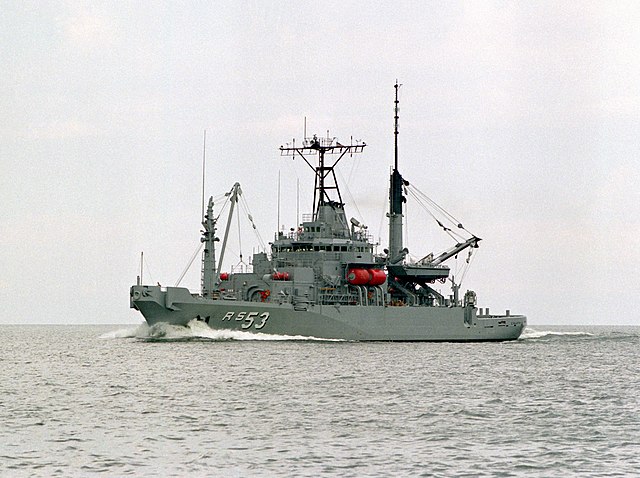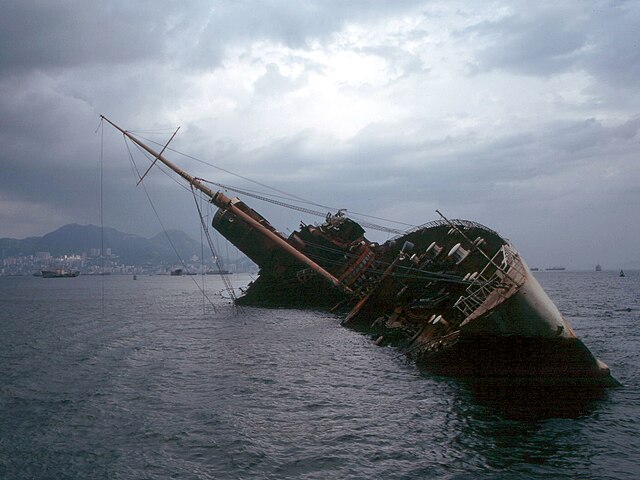Marine salvage is the process of recovering a ship and its cargo after a shipwreck or other maritime casualty. Salvage may encompass towing, lifting a vessel, or effecting repairs to a ship. Protecting the coastal environment from oil spillages or other contaminants from a modern ship can also be a motivator, as oil, cargo, and other pollutants can easily leak from a wreck.
Marine salvage of a fishing boat off the coast of Estonia in 1973. Photo by Jaan Künnap
USS Regulus hard aground in 1971 due to a typhoon: after three weeks of effort, Naval salvors deemed it unsalvageable.
USNS Grapple, an example of a modern naval rescue salvage ship
Seawise University capsized after being gutted by fire in 1972
A shipwreck is the wreckage of a ship that is located either beached on land or sunken to the bottom of a body of water. Shipwrecking may be intentional or unintentional. There were approximately three million shipwrecks worldwide as of January 1999, according to Angela Croome, a science writer and author who specialized in the history of underwater archaeology.
The shipwreck of SS American Star on the shore of Fuerteventura in 2004
A sonar image of the shipwreck of the Soviet Navy ship Virsaitis in Estonian waters
Johan Christian Dahl: Shipwreck on the Coast of Norway, 1832
Bow of RMS Titanic, first discovered in 1985








